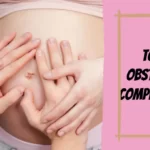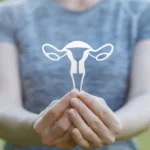
If you’ve undergone tubal ligation, commonly known as having your “tubes tied,” you may wonder about your pregnancy options and chances afterward. Tubal ligation is a surgical procedure that involves blocking, sealing, or cutting the fallopian tubes to prevent fertilization and pregnancy. However, it’s essential to note that while tubal ligation is highly effective, there is still a slight possibility of pregnancy. In this comprehensive guide, we will explore the chances of pregnancy after tubal ligation, addressing the common questions and concerns you may have.
What is Tubal Ligation?
Tubal ligation or having tubes tied is one of the common methods of sterilization of women, in which fallopian tubes are clamped and tied; this prevents egg from reaching the uterus. Normally, tubal ligation is said to be a permanent method of contraception. Chances of pregnancy after tubal ligation is possible, but will require some assistance in the way of further surgery or IVF.
Related: Important Advice For Women Who Are Pregnant
Chances Of Pregnancy After Tubal Ligation
Tubal ligation is considered a permanent form of birth control. However, there is still a small chance of becoming pregnant after the procedure. The likelihood of pregnancy after tubal ligation varies depending on various factors, including the method used during the surgery and the time that has passed since the procedure. It’s important to understand your options and the chances of pregnancy to make informed decisions about your reproductive health.
Can I get Pregnant after Tubal Ligation?
While tubal ligation is highly effective at preventing pregnancy, no birth control method is 100% foolproof. In rare cases, the fallopian tubes may naturally reconnect or form new openings, allowing sperm to reach the egg. Additionally, if the procedure was not done correctly or complications occurred, the chances of pregnancy may increase. If you suspect you might be pregnant after tubal ligation, it is crucial to consult with your healthcare provider for further evaluation.
What are the signs of Pregnancy after Tubal Ligation?
Recognizing the signs of pregnancy after tubal ligation can be challenging since the procedure often causes changes in menstrual cycles and hormonal levels. However, some common signs of pregnancy to look out for include missed periods, breast tenderness, nausea, fatigue, frequent urination, and increased sensitivity to smell. If you experience any of these symptoms and suspect pregnancy, it’s advisable to take a home pregnancy test or seek medical advice for confirmation.
How common is Pregnancy after Tubal Ligation?
The occurrence of pregnancy after tubal ligation is relatively rare. According to studies, the failure rate of tubal ligation is estimated to be less than 1%. However, it’s important to remember that the risk may slightly increase over time. Research suggests that the cumulative 10-year failure rate for tubal ligation is around 1.85%. While these numbers may seem low, it’s crucial to consider them when assessing your chances of pregnancy after tubal ligation.
What are the chances of an Ectopic Pregnancy after Tubal Ligation?
An ectopic pregnancy is a potentially life-threatening condition where a fertilized egg implants outside the uterus, most commonly in the fallopian tubes. The risk of ectopic pregnancy after tubal ligation is higher because the procedure alters the normal anatomy of the fallopian tubes, making it more challenging for the fertilized egg to travel to the uterus. Studies indicate that the rate of ectopic pregnancy after tubal ligation ranges from 1 to 3%. If you experience severe abdominal pain, vaginal bleeding, dizziness, or shoulder pain after tubal ligation, it’s crucial to seek immediate medical attention, as these could be signs of an ectopic pregnancy.
Can Tubal Ligation be reversed if I want to get Pregnant?
Tubal ligation reversal, also known as tubal reanastomosis, is a surgical procedure that aims to restore fertility by reconnecting the fallopian tubes. The success of tubal ligation reversal depends on various factors, such as the method used during the initial tubal ligation, the length and health of the remaining fallopian tube segments, and the woman’s age. While the procedure can be successful in some cases, it’s essential to consult with a fertility specialist to determine if tubal ligation reversal is a viable option for you.
What are the Alternative Chances of Pregnancy after Tubal Ligation?
If tubal ligation reversal is not a feasible option, there are alternative methods available for achieving pregnancy. Assisted reproductive technologies (ART) such as in vitro fertilization (IVF) offer promising solutions. IVF involves retrieving eggs from the ovaries, fertilizing them with sperm in a laboratory, and then transferring the resulting embryos into the uterus. This method bypasses the fallopian tubes altogether, making it an effective option for women who have undergone tubal ligation.
Other alternatives include using a gestational carrier or considering adoption. These options provide opportunities for individuals or couples to expand their families without relying on the fallopian tubes for conception.
Conclusion
Tubal ligation is a highly effective method of permanent birth control, but it is not without its limitations. While the chances of pregnancy after tubal ligation are minimal, they do exist. It’s important to be aware of the signs of pregnancy and consider the possibilities when making decisions about your reproductive future. If you suspect pregnancy after tubal ligation or are considering alternative options for conceiving, it’s advisable to consult with a healthcare provider or fertility specialist who can provide personalized guidance based on your specific circumstances.
By understanding the chances of pregnancy after tubal ligation, you can make informed choices that align with your reproductive goals and desires.
Related: 4 Ways to Get Pregnant That Aren’t Sex
Frequently Asked Questions (FAQs)
Can I get Pregnant Naturally after Tubal Ligation?
While it is rare, there is still a slight possibility of natural pregnancy after tubal ligation. It is essential to consult with a healthcare professional for a proper evaluation if you suspect you might be pregnant.
What are the Success Rates of Tubal Ligation Reversal?
The success rates of tubal ligation reversal vary depending on factors such as the method of ligation, the length and health of the remaining fallopian tubes, and the age of the individual. It’s crucial to consult with a fertility specialist for a personalized assessment.
How much does Tubal Ligation Reversal Cost?
The cost of tubal ligation reversal can vary significantly depending on factors such as the healthcare provider, location, and additional expenses such as anesthesia and hospital fees. It’s advisable to research different options and consult with medical professionals to get a better understanding of the costs involved.
Are there any Risks or Complications associated with Tubal Ligation Reversal?
Like any surgical procedure, tubal ligation reversal carries certain risks and potential complications. These can include infection, bleeding, damage to surrounding organs, or an ectopic pregnancy. It’s important to discuss the potential risks with your doctor and make an informed decision based on your specific circumstances.
What is the Success Rate of IVF after Tubal Ligation?
The success rate of IVF after tubal ligation can vary depending on factors such as age, overall health, and the quality of the eggs and sperm involved. Success rates can range from 30% to 60%, but it’s crucial to remember that individual results may vary. Consulting with a fertility specialist can provide a clearer understanding of your chances of success with IVF.
How long does the Adoption Process Take?
The length of the adoption process can vary depending on multiple factors, including the type of adoption (domestic or international) and the specific circumstances involved. On average, the adoption process can take anywhere from several months to a few years. It’s essential to be patient and prepared for potential delays and requirements during the adoption journey.












